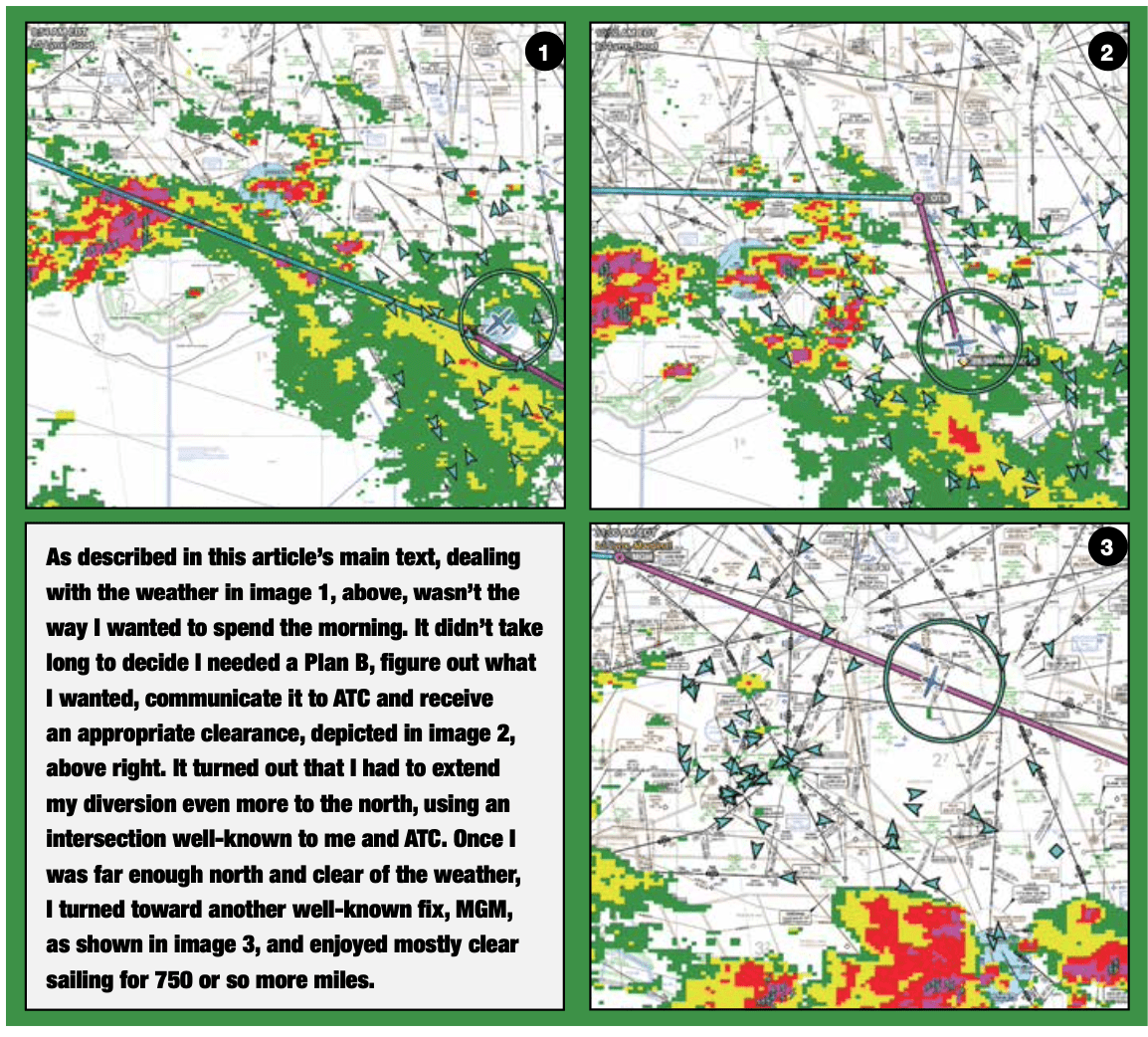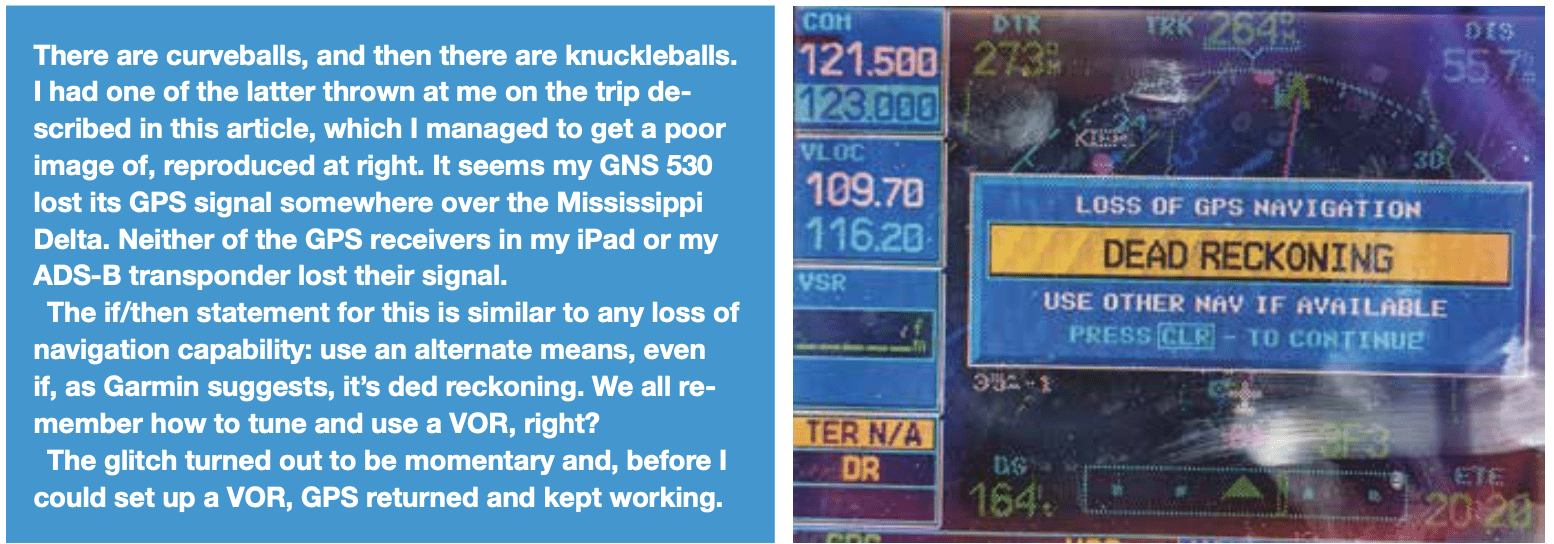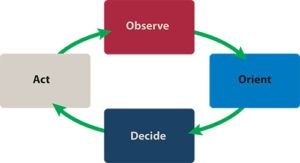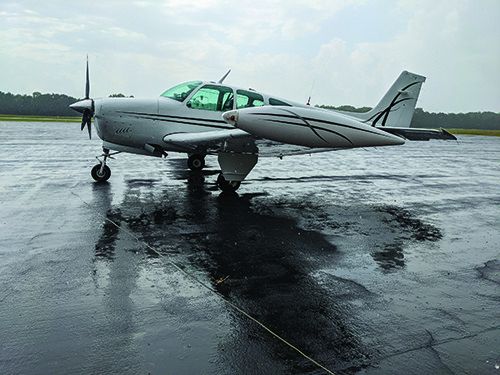A lot of ink and pixels have been spilled over the years to discuss, explore and define what is called aeronautical decision-making, or ADM. The overall topic has its own chapter in the FAA’s Pilot’s Handbook of Aeronautical Knowledge (PHAK), a rather dated Advisory Circular—AC 60-22, “Aeronautical Decision Making”—and a series of FAA FAASTeam courses accessible on the faasafety.gov web site. Those all are useful tools, especially for primary students or those looking to move up the education, experience and certification ladders. As with much of the FAA’s approach to risk management, they all seem to try teaching ADM by applying subjective solutions to a dynamic, objective environment.
That’s not an altogether bad thing, but the tools and acronyms employed have gotten a bit dated, just like that AC on ADM from 1991. Along the way, the general aviation accident record hasn’t improved as much as it should, as much as industry and the agency would like, or as much as the recent revolutions in avionics and airframe design might have promised.
To me, ADM means thinking through, in advance, the kinds of events that will get us into trouble if we don’t do something, and what our responses should be. The fact is, there’s only so much that can happen, and our responses to most of those events easily can be determined before we even leave for the airport. For the computer-literate among us, think of it more as an “if/then” programming instruction. If condition X happens, then perform Y action. Let’s talk about what I mean.

GO JUICE
I recently had the opportunity to fly a long cross-country—900 nautical miles one way. The trip took me over a lot of different terrain, through or around or into all kinds of airspace and, since it was summer, lots of convective weather. It featured a few curveballs, including a big one I really hadn’t had to deal with before in decades of flying personal airplanes.
The big curveball involved fuel. I had escaped Florida, on my way to Texas, and built into my flight planning a fuel stop about an hour short of my destination. I did that for a couple of reasons. One, although I had enough fuel to reach my destination non-stop, I would not have been able to accept a delay and land with my personal-minimum hour of fuel remaining.
If the weather caved or I had to hold, I would be in a minimum fuel state I didn’t want. I plan for 13 gph in cruise, but go through 30 gph at full-power settings, like at takeoff or initial climb. I’d planned to have 30 or so gallons on board at my fuel stop, which would leave me with 15 or so gallons if I overflew it to my ultimate destination. But planning to arrive with 15 gallons was not enough in my book, especially if I got busy or distracted for a few minutes with the mixture still in the full-rich position.
Compounding the equation, the fuel price at my destination’s big-city FBO was more than I wanted to pay to fill all the tanks. So I picked a cheap-fuel location along the way I had used before and filed for it instead.
The curveball came when the self-serve pump at my fuel stop sputtered out a couple of pints and quit. Yes, gentle reader, the airport had run out of 100LL. (A special shout-out to the pilot immediately preceding me who took on 177 gallons of gas.) The FBO attendant managed to manipulate the plumbing to squeeze out a few more gallons, which he gave me gratis, but there was no way to know how much was added. Given the wing’s dihedral, I couldn’t visually verify I had enough fuel to get to my destination.
I did have enough fuel to get to another nearby airport, however. After calling ahead—what a concept!—to verify the airport 28 nm away had 100LL, I launched, arriving just before a thundershower soaked me and the airplane, as memorialized in the image on page 4.
So, to summarize, the X in this situation was not enough fuel to get to my destination. The Y was to get more fuel. Doing that required a few phone calls and a short hop. I eventually departed for the final leg to my destination with full tanks, confident I had made the right set of decisions.

Whenever a non-pilot asks what I do when my single’s engine fails, my one-word response—“Land”—rarely endears me to them, but it’s really that simple. Without engine power, I have little choice in the matter. I usually have choices on how to do it and precisely where to do it, and so far those choices all have worked out. But at its root, an engine failure is another simple if/then statement. It’s not, as many non-pilots might think, a roll of the dice.
We may not be able to game out every single scenario to confront us in the cockpit, but we can come close, with a set of basic if/then statements for when the bed gets soiled. We can think them through sitting at home in our favorite chair, hangar-flying with other pilots at the FBO or in an online forum.
This isn’t a game of chance: We can control most aspects of the risks imposed by personal aviation. With the tools we have today, there’s no excuse for not knowing what the weather is and having a plan for it. There’s also no excuse for not having the training and expertise to meet the challenges. There’s no need to roll the dice.
GO NORTH TO GO WEST
Earlier that mid-June day, I had departed home plate in pretty good VFR. My Nexrad display soon got colorful, though, and the way a series of storms was developing, I had two choices: I could bob and weave my way west along my flight-planned route, past some really nasty Nexrad returns, or I could jog a few minutes to the north to get around it all before turning west and motoring off to my destination in smooth and less-colorful air.
I chose door #2. My decision was made much easier since I was close to some old stomping grounds and knew some of the navaids and fixes without having to look. I asked ATC for a dogleg re-route to a fix way downrange of where I was but already on my cleared/flight-planned route. I was immediately cleared as requested and turned on-course, updating the avionics as I went. The Nexrad pictures I was looking at are reproduced in the images the top of the preceding page.
The if/then statement here is pretty simple. (Actually, they all are if you accurately define the situation and accept it.) It goes something like this: X equals, “there are too many storms in that direction and I don’t want to go that way.” In turn, Y equals, “I need a new plan and a new route to implement it.” Just as easily, Y could have been, “I need to turn around and go back home,” or, “I need to land at the nearest suitable airport and sit this out until conditions improve.”
After going north to go west, I more or less had smooth sailing. There was one 15-degree jog to the left to dodge some other storms and take me a couple of miles out of my way, but otherwise I flew a straight 750-mile leg to my planned fuel stop; you know, the one without fuel.

FEET WET
The get-back flight a few days later posed some similar challenges. Thankfully, none of them involved fuel, but they did in fact result in yet another unwanted landing, for weather this time. Did I mention it was summertime, and I was in Florida? This issue’s cover image—which was mirrored to allow better text placement—tells some of the tale.
It was a mid-June late afternoon, and a series of storms was marching up from the Gulf of Mexico and over the so-called Big Bend portion of Florida, with associated convective activity in haphazard bands down the peninsula to the south. From the Big Bend, my destination was about halfway down the state toward the Keys. There was a good bit of yellow and red at various places along the way, sprinkled with some magenta, but there also were some large areas clear of storms.
The storms were marching off to the northeast as I approached the Big Bend from the west. I had just topped all the tanks again, so I could afford to stooge around somewhere for a bit if I had to. But there was no need. Clear air over the Gulf beckoned, and I slid out over the water, keeping an eye on the shoreline and ensuring ForeFlight’s glide-range tool showed I could make land if the engine quit. I did a bob, then a couple of weaves and soon I was cleared direct to my destination. But my day wasn’t done: There was a largish splotch of red and magenta boiling up south of my destination. Of course, it was moving north, slowly, but my Spidey sense was screaming that we were going to arrive at the destination at the same time.
As I got closer, I could see the storm. I definitely was not going to fly into it, but I had a shot at getting on the ground and securing the airplane before it arrived. I worked with ATC to dogleg to the west a bit and buy me a lower minimum vectoring altitude, and then got down as low as I could without canceling IFR.
But it was not to be. I was about five miles out, could identify area landmarks and was about 30 seconds from having the runway in sight when I flew into the storm’s northernmost gust front. That was all I needed to invoke the “then” portion of the if/then statement.
I had already alerted the controller that I was going to divert to nearby Class C International, so he was ready. I was ready, too, with the ATIS and tower frequencies dialed in. So when I called in the divert, no one was surprised. I slid the mains on International’s main runway and taxied to the ramp, well before any rain arrived. A couple hours later, after a nosh and a bathroom break, I saddled back up for an uneventful 10-minute hop to home plate.

The if/then statement? If there’s a chance (and there’s always a chance) you can’t get into your destination, then have a Plan B and implement it. Since such a chance exists, arrive with enough fuel to go somewhere else. Make these decisions far enough ahead so you can tell ATC what the plan is in advance. That way, everyone is on the same page.
CIRCUIT BREAKERS AND OODA
Another way to think of the if/then equation is as a circuit breaker. Once the breaker is tripped by weather, fuel or whatever, the circuit (Plan A) becomes inoperative. To reset the breaker and use the circuit again, you need to fix what caused it. Changing conditions—weather, fuel, mechanicals, passenger needs and so many more events—can trigger the if/then statement, trip the circuit breaker or whatever other analogy you want to use. The trick is having a Plan B or C.
Aeronautical decision-making doesn’t have to be difficult. It may have several conditions—if/then statements—but each one must be processed individually. As one if/then statement is processed, move on to the next one. If you prefer, another way to think about ADM is as the OODA Loop developed and popularized by military strategist USAF Col. John Boyd: Observe, Orient, Decide, Act, and then repeat.
Whether you use an if/then statement, an OODA Loop or some other decision-making tool, the key is to obtain and maintain situational awareness, process the information you need to make the right decision, implement it, and monitor your progress and the new developments brought about by your actions.
Jeb Burnside is this magazine’s editor-in-chief. He’s an airline transport pilot who owns a Beechcraft Debonair, plus the expensive half of an Aeronca L-16B/7CCM Champ.




